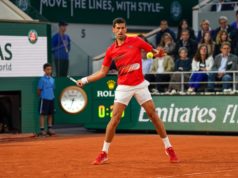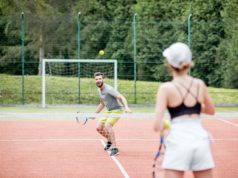By Luke Jensen, French Open Doubles Champion
I’ve been all over the tennis map so far this year, attending both pro and amateur events. It’s so much fun seeing tennis played with a passion and love to be on the court. The one element I really enjoy is watching competitive matches and how the tactics evolve along with the mental gymnastics that players deal with while going for the win.
Having the right mindset is absolutely everything if you want to get the most out of your ability. Tennis is the most challenging in this regard because coaching is not allowed on court in junior tennis. So, as a young player myself, I found it mission-critical to have a game plan written down from my coaches on how to approach a match — and even a training block to get the most out of my practice sessions.
How would you grade yourself regarding your mental and emotional toughness? Be honest! How are your nerves before, during, and at the end of sets? If you are nervous at any point, that is a really good sign. It means you care and something is on the line that matters to you. How you cope with the nervous times comes down to finding and equipping yourself with the proper tools to navigate those moments.
My insight for you is fairly direct but hard to master. I would always start the process going to the match to focus on being the best competitor I could be. I didn’t focus on the result. I didn’t focus much on how fun it would be to win or how horrible I would feel if I lost. I just wanted to compete better than my opponent — in emotional composure and temperament. To compete better than my opponent in tactical adjustments and enthusiasm.
From there, I would put down into my tennis tactical journal all the aspects I wanted to accomplish and on changeovers I would write down what I needed to adjust. Writing in my tennis journal during the match kept me present in the HOW I laser-focus on details; HOW I am winning and losing points. I have to self-coach as much as possible on court.
I enjoyed trying to figure out my opponents and how to beat them. It kept me learning from all my matches and experiences. I found I could get the best of players who were so consumed with winning or losing. I was looking for ways to develop disruptive shots that played into their chaotic mindset.
Doubles was even more exciting because I was able to discuss my tactical ideas with my partner. As International Tennis Hall of Famer Roy Emerson put it: Always look for the pigeon on the other team to play to. Everything in doubles comes down to playing shots to the player who doesn’t want the ball.
As far as dealing with pressure, the former world number-one Jim Courier has a great saying: You better want the pressure because the pressure wants you! There are so many great options these days — from books to online Ted Talks — to learn more about dealing with competitive anxiety and performing your best in pressure situations.
Before I go, let’s talk gear! I’m a massive tennis gear nerd and always looking for a new edge in performance. Shoe-wise, I stress that players who play on clay have a designated shoe for that surface. If you play on grass, most places won’t let you wear the grass-court-soled shoes because they can tear up the surface, so a clay court shoe will be the next best thing. String-wise, be careful not to be sold on what the pros use. Those strings can cause arm, elbow, and shoulder issues, as well as wrist problems due to the stiffness of the string. If you don’t have arm issues, give a polyester string a go, but if you have any arm issues ask your stringer for a softer string that will be kinder on your joints without losing too much performance.




